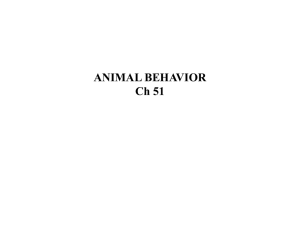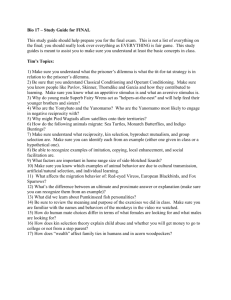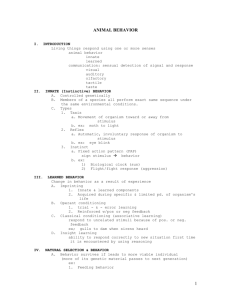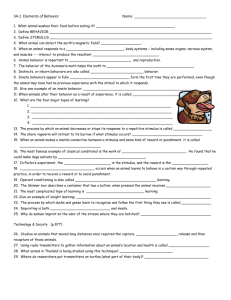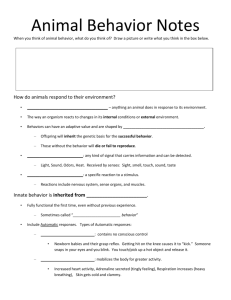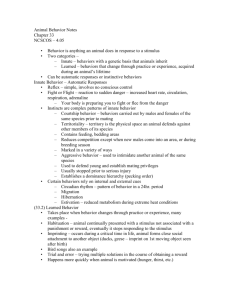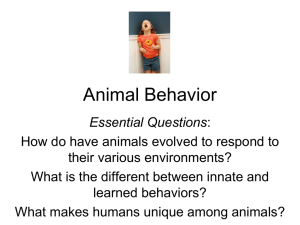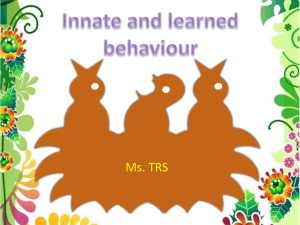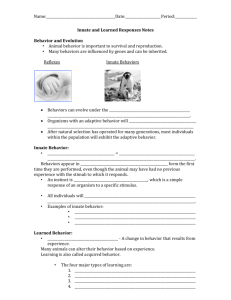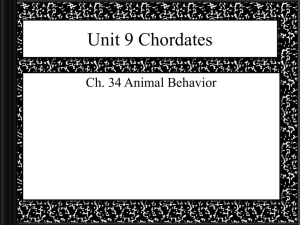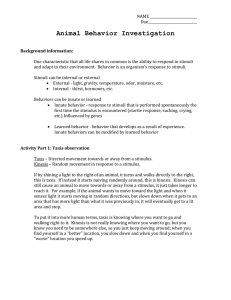Chapter 51 Population Ecology
advertisement
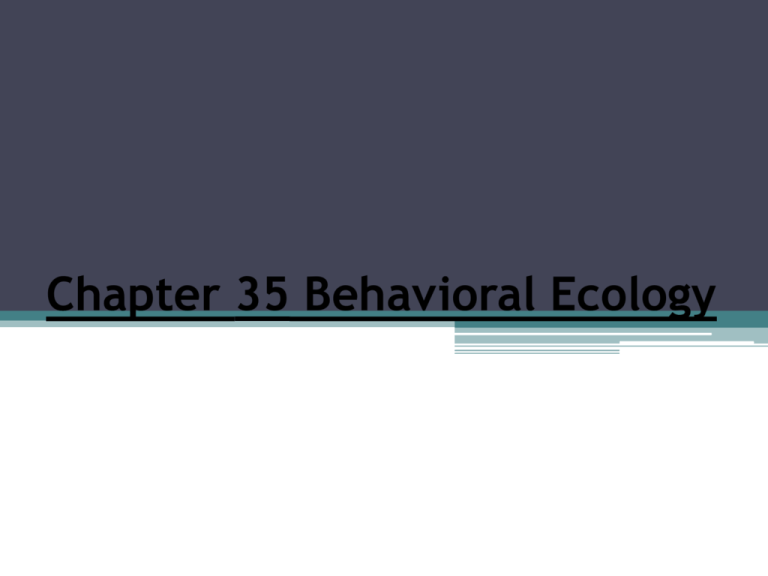
Chapter 35 Behavioral Ecology Define behavior. Behavior encompasses a wide range of activities. A behavior is an action carried out by muscles or glands under the control of the nervous system in response to an environmental cue. Collectively, behavior is the sum of an animal’s responses to internal and external environmental cues. The questions investigated by behavioral ecologists fall into two broad categories. 1. Proximate questions concern the immediate reason for the behavior. How is it triggered by stimuli (environmental cues that cause a response)? What physiological or anatomical mechanisms play a role? What underlying genetic factors are at work? Proximate causes are the answers to such questions about the immediate mechanism for behavior. 2. Ultimate questions address why a particular behavior occurs. Ultimate causes are the evolutionary explanations for behavior. Explain what is unique about innate behavior. • Developmentally fixed, despite differences in development • Under strong genetic influence Define fixed action patterns and give an example. • Sequence of unlearned behavioral acts that is essentially unchangeable and, once initiated, usually carried to completion • Triggered by an external sensory stimulus (sign stimulus) • Ex. Three-spined stickleback fish attacks other males that invade nesting territory • Sign stimulus = red underside of intruder Define imprinting. • Type of behavior that includes both learning and innate components; generally irreversible • Sensitive period • Ex. Young geese follow mother Explain how genes and environment contribute to behavior. • Genes and environment interact (not nature VS. nurture, but nature AND nurture) • Observe the “norm of reaction” ▫ Vary based on environment? ▫ Similar, despite environmental differences? • Developmentally fixed behavior is innate Distinguish between kinesis and taxis. • Kinesis – simple change in activity/turning rate in response to a stimulus ▫ Sow bugs more active in dry, less active in humid areas • Taxis – automatic, oriented movement toward (positive) or away from (negative) some stimulus ▫ Trout swim into current Explain optimal foraging theory. • Compromise between the benefits of nutrition and the costs of obtaining food ▫ Energy expenditure ▫ Risks of being eaten by predator while foraging • Natural selection should favor behavior that minimizes costs and maximizes benefits. Explain how predation risk may affect the foraging behavior of a prey species. • A “successful” forager will avoid areas of high risk, even though food availability might be higher in high-risk areas. Define inclusive fitness and reciprocal altruism. Discuss conditions that would favor the evolution of altruistic behavior. • Inclusive fitness – total effect an individual has on proliferating its genes by producing its own offspring AND by providing aid that enables other close relatives, who share many of the same genes, to produce offspring. • Ex. Sterile worker bees labor on behalf of fertile queen • Ex. Naked mole rat. Define the concept of kin selection. • Natural selection that favors altruistic behavior by enhancing reproductive success of relatives ▫ Weakens with hereditary distance ▫ Quantifiable
